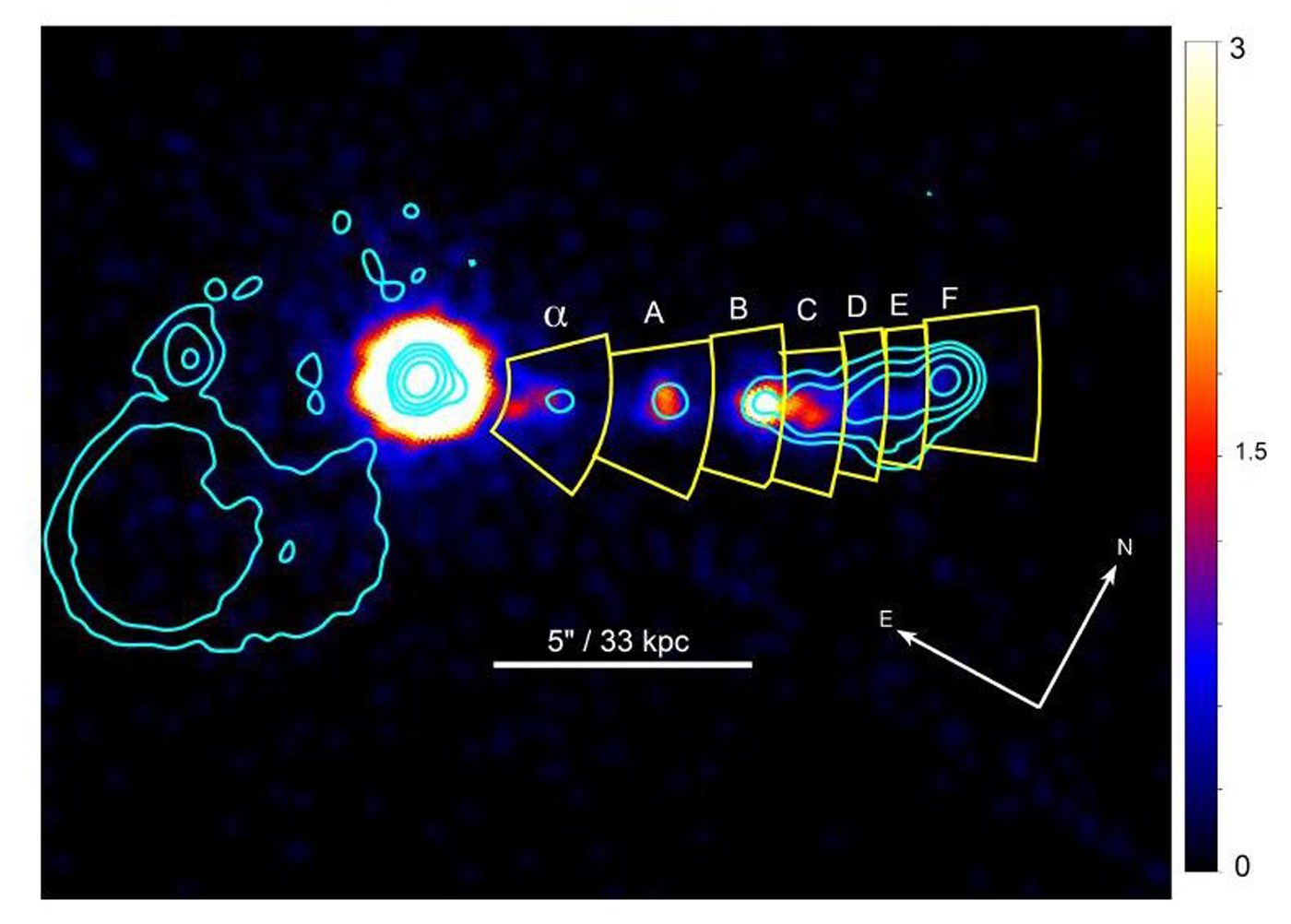
Black hole jets are known to emit X-rays, but how they accelerate particles to this high-energy state is still a mystery. A new study published in Nature Astronomy, “Variability of extragalactic X-ray jets on kiloparsec scales”, found that the X-ray emissions of a statistically significant number of jets varied over just a few years, challenging one leading theory of how jets generate X-rays. The study analyzed archival data from the Chandra X-ray Observatory and looked at nearly all of the black hole jets for which Chandra had multiple observations. The researchers discovered relatively frequent variability on such short time scales.
“One of the reasons we’re excited about the variability is that there are two main models for how x-rays are produced in these jets, and they’re completely different,” said lead author Eileen Meyer, an astronomer at the University of Maryland, Baltimore County. "One model invokes very low-energy electrons, and one has very high-energy electrons. And one of those models is completely incompatible with any variability."
Some black holes are known as blazars, shooting jets of matter and radiation out at nearly the speed of light. The simplest theory for how these jets generate X-rays assumes particle acceleration occurs at the galaxy's center in the black hole "engine" that drives the jet. However, the new study found rapid changes in X-ray emissions throughout the jets' length. That suggests particle acceleration occurs all along the jet, at vast distances from the jet's origin at the black hole.

“Jets turn up everywhere in astrophysics,” said Dr. William Sparks, SETI Institute research scientist and co-author on the paper. “It’s remarkable that we are still learning what they are and how they work. Here, the application of state-of-the-art statistical methods show enormous X-ray emitting jets in active galaxies vary on really short timescales.”
The new findings poke significant holes in one of the major theories for x-ray production in black hole jets, and Meyer hopes the paper spurs future work. "Hopefully, this will be a real call to the theorists," she said, "to basically take a look at this result and come up with jet models that are consistent with what we’re finding.”
The paper can be found here.





